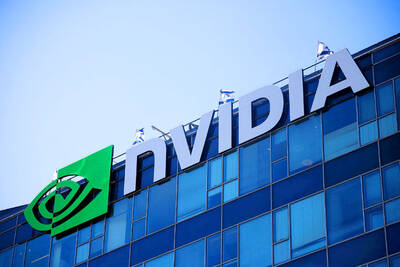Law firms, beloved islands of security and stability to their employees, are proving vulnerable to the turbulence in the current economy.
Squeezed by their clients and their own lawyers in tough times, some firms are collapsing under the pressure. Big corporate clients are battling to keep costs down, while the firms' costs are rising, from lawyers, staff and technology. Partners, meanwhile, are often unwilling to accept declining pay and so defect.
"There are more firms working on radically restructuring," said Lisa Smith, who leads the merger and consolidation practice at consulting firm Hildebrandt International. She said her business is busier than ever advising law firms trying to avoid collapse, adding that there have been a number of desperate, last-ditch efforts at mergers recently to stave off law firm implosions. "We're seeing a rash of them right now."
The most spectacular collapse came last week, when partners of Brobeck, Phleger & Harrison decided to wind down the prominent Bay Area firm. On Monday, Skjerven Morrill, a 67-lawyer San Jose, Calif., firm specializing in intellectual property law, announced that it would dissolve.
In December, the venerable Hill & Barlow, a 107-year-old Boston law firm, announced that it would dissolve after a group of real estate partners said they planned to defect.
Gradual changes in the practice of law have made law firms more vulnerable today than they have been in years, according to lawyers and their consultants. This is not the first time that lucrative work for big companies and investment banks has dried up. But many firms have become very specialized, so they do not have the bankruptcy business to carry them.
The firms' problems generally become evident early in the year as partners learn how much money they made in the previous year and how much they will probably make in the coming year. If both numbers are in decline, some partners invariably begin to look for greener pastures; several partners jumped ship from Brobeck over the last year after hearing the prognosis for 2002, for example.
"They'll jump for money," said Ward Bower, a principal at Altman Weil, a consulting firm that advises law firms. "Twenty years ago they wouldn't. That injects volatility into the marketplace."
At Hill & Barlow, a group of real-estate lawyers announced their intention to join another firm, said Robert A. Bertsche, a former partner at the firm. "There have been times when one department has been stronger and another department has been weaker," he said, but partners would remain loyal. "They were different times. And maybe they were different people."
When partners do defect, the firm still faces lease costs and personnel costs but fewer lawyers to bring in revenue, squeezing profits, Bower said. The weak economy has the same effect, driving down partner compensation and leading more partners to abandon ship, Bower said.
Firms that relied heavily on slipping sectors of the economy -- technology companies, in Brobeck's case -- ?have found the climate particularly harsh. Brobeck shed nearly a third of its lawyers last year, before deciding to shut down last week.
Conventional wisdom held that law firms could weather economic downturns by relying on business lines like bankruptcy and civil litigation that tend to boom in bad times. But in the late 1990s, not all firms kept their staff or their clientele balanced, leaving them without bankruptcy lawyers to subsidize those stock offering gurus who are now underutilized.
"The countercylical practices for the most part are not evenly distributed," Bower said. Firms with big bankruptcy practices, like New York's Weil, Gotshal & Manges -- ? which is representing Enron, among others -- ?are very busy, but other firms with little bankruptcy expertise are experiencing a tough year, he said.
Law firms carry more debt today as well. Brobeck, for example, had tens of millions in debt, and that was a significant factor in the decision to wind down, partners said last week.

GROWING OWINGS: While Luxembourg and China swapped the top three spots, the US continued to be the largest exposure for Taiwan for the 41st consecutive quarter The US remained the largest debtor nation to Taiwan’s banking sector for the 41st consecutive quarter at the end of September, after local banks’ exposure to the US market rose more than 2 percent from three months earlier, the central bank said. Exposure to the US increased to US$198.896 billion, up US$4.026 billion, or 2.07 percent, from US$194.87 billion in the previous quarter, data released by the central bank showed on Friday. Of the increase, about US$1.4 billion came from banks’ investments in securitized products and interbank loans in the US, while another US$2.6 billion stemmed from trust assets, including mutual funds,

AI TALENT: No financial details were released about the deal, in which top Groq executives, including its CEO, would join Nvidia to help advance the technology Nvidia Corp has agreed to a licensing deal with artificial intelligence (AI) start-up Groq, furthering its investments in companies connected to the AI boom and gaining the right to add a new type of technology to its products. The world’s largest publicly traded company has paid for the right to use Groq’s technology and is to integrate its chip design into future products. Some of the start-up’s executives are leaving to join Nvidia to help with that effort, the companies said. Groq would continue as an independent company with a new chief executive, it said on Wednesday in a post on its Web

JOINT EFFORTS: MediaTek would partner with Denso to develop custom chips to support the car-part specialist company’s driver-assist systems in an expanding market MediaTek Inc (聯發科), the world’s largest mobile phone chip designer, yesterday said it is working closely with Japan’s Denso Corp to build a custom automotive system-on-chip (SoC) solution tailored for advanced driver-assistance systems and cockpit systems, adding another customer to its new application-specific IC (ASIC) business. This effort merges Denso’s automotive-grade safety expertise and deep vehicle integration with MediaTek’s technologies cultivated through the development of Media- Tek’s Dimensity AX, leveraging efficient, high-performance SoCs and artificial intelligence (AI) capabilities to offer a scalable, production-ready platform for next-generation driver assistance, the company said in a statement yesterday. “Through this collaboration, we are bringing two

Even as the US is embarked on a bitter rivalry with China over the deployment of artificial intelligence (AI), Chinese technology is quietly making inroads into the US market. Despite considerable geopolitical tensions, Chinese open-source AI models are winning over a growing number of programmers and companies in the US. These are different from the closed generative AI models that have become household names — ChatGPT-maker OpenAI or Google’s Gemini — whose inner workings are fiercely protected. In contrast, “open” models offered by many Chinese rivals, from Alibaba (阿里巴巴) to DeepSeek (深度求索), allow programmers to customize parts of the software to suit their